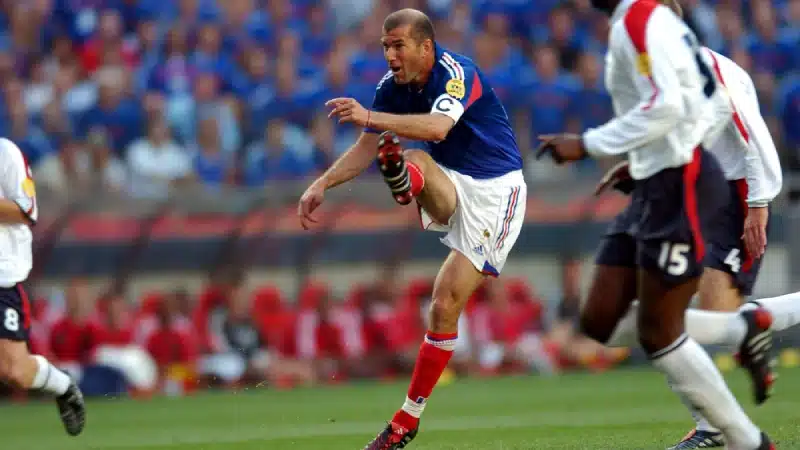Conducting the game: The best midfielders in football history

In football, midfielders are arguably the most vital players. They sit at the heart of the pitch, conducting the game like the maestro of an orchestra. Across the midfield, players have unique roles as they are the link from the defence to the attack. Midfielders must dictate the tempo and influence outcomes in ways that go beyond goals and assists.
The position has evolved throughout history, as many diverse styles have affected it. With all the visionaries and tireless workers in the midfield in football history, some midfielders have stood out and displayed the pinnacle of the position.
What makes a top-tier midfielder?
A world-class midfielder combines many traits that enable them to control the game. They can be any type of footballer as the midfield allows many play styles. However, they are not as prolific as the strikers as those players often take the spotlight. The midfielders dictate the game’s rhythm and flow. Here are the qualities you should expect:
- Vision - This is crucial for top midfielders as they need to see the passing lanes where they can place the ball with precise passes.
- Tactical awareness - The characteristic that allows midfielders to read the game and adapt on the fly. Whether they need to press high or drop deep, top-tier midfielders always influence play.
- Passing range - These players must know how to make short and sharp passes, but they can also make long passes. They must know how to make these passes as they can lead to the best plays.
- Stamina - Since midfielders are required to cover the most distance, they must have the endurance to keep playing and keep up with the other team.
- X-factor - This is the intangible quality that allows midfielders to change games and lift the team to victory.
The pioneer: Johan Cruyff
During his career, Johan Cruyff was more than a top-tier attacking midfielder. He was a game-changing philosopher in the sport. He was one of the most fluid footballers in history as he contributed well to the midfield, and was revolutionary for his contributions to the influential Total Football style.
Cruyff was the focal point of Total Football, a concept where positional roles were fluid, which was the most valuable factor on the pitch. His spatial intelligence was great, as he could control the game with his positioning and movement. Cruyff set the standard for today’s football because space is a big part of today’s game.
With clever runs and feints, Cruyff showed his superb knowledge of the game. He had plenty of triumphs during his career, winning three Ballon d’Ors in 1971, 1973, and 1974. He won three consecutive European Cups (today’s UEFA Champions League) with Ajax, and even led the Netherlands to the FIFA World Cup Final in 1974.
Midfield engine: Lothar Matthäus
For anyone who wants to learn about the box-to-box midfield, Lothar Matthäus was the best example. He was a tireless player who combined his athleticism with brains. That made him one of the most versatile players in the midfield because he could play anywhere, whether as a defensive or central midfielder.
Matthäus has everything in his physical traits, with his strength and endurance, but he was also an intelligent player who could be plugged into any system. He was a superstar for West Germany, leading them to the 1990 World Cup win, earning the Ballon d’Or.
Add that success to his European Championship (Euros) in 1980 with many Bundesliga and Serie A titles, proving he is one of the most complete players in football’s past. Matthäus’ style was influential to today’s players because he was the prototypical defensive and box-to-box midfielder.
Tempo controller: Zinedine Zidane
Zinedine Zidane was one of the craftiest players ever, known for his skill, composure, and ability to deliver in crucial moments. With the combination of being physically strong and having graceful skills, Zidane exuded elegance. He controlled the tempo by delivering killer passes and turning defenders with his flicks.
He always had an immense X-factor, as he showcased why a big-game player can change the sport. This was seen with his two headers during the World Cup in 1998, alongside the iconic volley goal he scored for Real Madrid in the 2002 Champions League Final.
With a Ballon d’Or in 1998, a World Cup, a European Championship, and a Champions League title, Zidane has a fantastic résumé. He was not just a number 10, he was a game-changer who influenced today’s group of players like Jude Bellingham and Kevin De Bruyne.
Playmaker: Xavi Hernández
Xavi Hernández was seen as the metronome because he was the heartbeat of any team he played for. He was a central cog in the iconic Barcelona tiki-taka system with quick yet accurate passes. Xavi has been successful with his control over the midfield for Barcelona and the Spain national team.
The trophy cabinet should also speak for itself with four Champions League titles, eight La Liga titles, a World Cup, and two Euros wins. Now, many players are trying to mimic him, with midfielder Pedri standing out as someone who has drawn inspiration from the fellow Spaniard.
Modern maestro: Luka Modrić
Luka Modrić is one of the greatest midfielders of his generation. He was a player of extraordinary intelligence and elite stamina. That blend of physical traits and mentality served him well.
Modrić proved he could be adaptable across many roles in the midfield. He possesses all the qualities of a top-tier midfielder and played a crucial role in Real Madrid’s five Champions League trophies.
The best midfielders rightfully earn praise for establishing themselves as legends. It is a tough role to play in football, making it crucial for the younger players to know the top players’ biggest plays.













